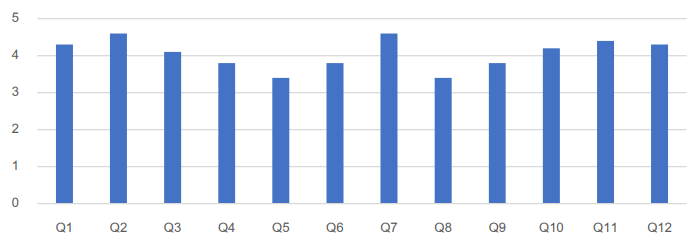Enhance supply chain dynamics education: Evaluate insights from beer game simulations
Main Article Content
บทคัดย่อ
With the rapidly changing global trade environment, consumer preferences and sustainability issues are becoming increasingly prominent, and supply chain management issues are becoming increasingly important. The purpose of this paper is to explore a newly designed game simulation teaching software, Beer Game, which introduces its development and theory. The software will provide consumers’ true experience, by utilizing this application learners will simulate playing different roles to take the challenges of competing in the marketplace in the modern supply chains. Therefore, the experience of the beer game immerses learners with great significance in understanding the concept of supply chain management during the competition. Through a practical experience, the game starts with running in the marketplace, to experience the results of the business performance. Students had positive responses with highly engaged attitudes towards the Beer Game system. Instructors facilitate the operations with satisfactory results.
Article Details

อนุญาตภายใต้เงื่อนไข Creative Commons Attribution-NonCommercial-NoDerivatives 4.0 International License.
บทความนี้ได้รับการเผยแพร่ภายใต้สัญญาอนุญาต Creative Commons Attribution-NonCommercial-NoDerivatives 4.0 International (CC BY-NC-ND 4.0) ซึ่งอนุญาตให้ผู้อื่นสามารถแชร์บทความได้โดยให้เครดิตผู้เขียนและห้ามนำไปใช้เพื่อการค้าหรือดัดแปลง หากต้องการใช้งานซ้ำในลักษณะอื่น ๆ หรือการเผยแพร่ซ้ำ จำเป็นต้องได้รับอนุญาตจากวารสารเอกสารอ้างอิง
Croson, R., Donohue, K., Katok, E., & Sterman, J. (2014). Order stability in supply chains: Coordination risk and the role of
coordination stock. Production and Operations Management, 23(2), 176-196.
Fawcett, S. E., Magnan, G. M., & McCarter, M. W. (2008). Benefits, barriers, and bridges to effective supply chain management.
Supply chain management: An international journal, 13(1), 35-48.
Kimbrough, S. O., Wu, D. J., & Zhong, F. (2002). Computers play the beer game: can artificial agents manage supply chains?.
Decision support systems, 33(3), 323-333.
Kouvelis, P., Chambers, C., & Wang, H. (2006). Supply chain management research and production and operations
management: Review, trends, and opportunities. Production and Operations Management, 15(3), 449-469.
https://doi.org/10.1111/j.1937-5956.2006.tb00257.x
Kumar, S., Chandra, C., & Seppanen, M. S. (2007). Demonstrating supply chain parameter optimization through beer game
simulation. Information Knowledge Systems Management, 6(4), 291-322.
Kulik, C. L. C., & Kulik, J. A. (1986). Effectiveness of computer-based education in colleges. Aeds Journal, 19(2-3), 81-108.
Otto, A., & Kotzab, H. (2003). Does supply chain management really pay? Six perspectives to measure the performance of
managing a supply chain. European journal of operational research, 144(2), 306-320.
Riemer, K. (2008). The Beer game in business-to-business eCommerce courses–a teaching report. BLED 2008 Proceedings.
https://aisel.aisnet.org/bled2008/1
Sterman, J. D. (1989). Modeling managerial behavior: Misperceptions of feedback in a dynamic decision-making experiment.
Management Science, 35(3), 321-339.
Thompson, K. M., & Badizadegan, N. D. (2015). Valuing information in complex systems: An integrated analytical approach to
achieve optimal performance in the beer distribution game. IEEE Access, 3, 2677-2686.
Wang, X., & Disney, S. M. (2016). The bullwhip effect: Progress, trends, and directions. European Journal of Operational
Research, 250(3), 691-701. 50


